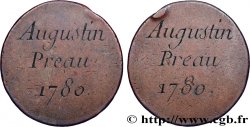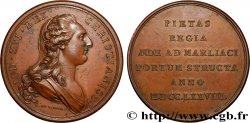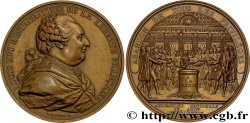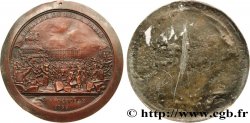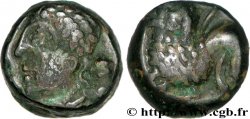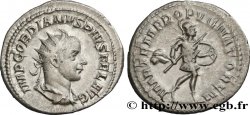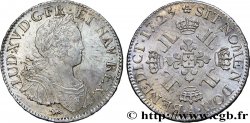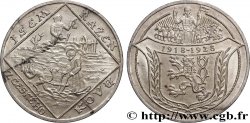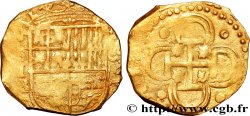Usted debe firmar y ser un comprador aprobado para pujar, Inicia sesión para pujar. Las cuentas están sujetas a la aprobación y el proceso de aprobación se alcanzan dentro de las 48 horas. No espere hasta el día en una venta se cierra el registro.Al hacer una oferta en este artículo usted está firmando un contrato jurídicamente vinculante para comprar este artículo y haga clic en «oferta» constituye una aceptación de los términos de uso de live auctions de cgb.fr.
La subasta debe ser colocado en euros enteros cantidades venta only.The se cerrará en el momento en la descripción del artículo, no se ejecutarán las ofertas recibidas en el sitio después de la hora de cierre. Veces Transmition pueden variar y las ofertas pueden ser rechazadas si espera a los últimos segundos. Para más información envie el FAQ Live auction.
Las ofertas ganadoras estarán sometidas a un 18% IVA incluido por gastos de participación a la venta.
Las ofertas ganadoras estarán sometidas a un 18% IVA incluido por gastos de participación a la venta.
| Valoración : | 120 € |
| Precio : | 62 € |
| Oferta más alta : | 65 € |
| Fecha de fin de la venta : | 09 julio 2024 17:23:10 |
| participantes : | 2 participantes |
Tipo : Médaille, Canal du Centre
Fecha: 1783
Metal: cobre
Diámetro: 50 mm
Eje de acuñación: 12 h.
Acuñador DUVIVIER Benjamin (1730-1819)
Peso: 61,29 g.
Canto: lisse
Cuño: sans poinçon
Comentarios sobre el estado de conservación:
Patine marron hétérogène présentant quelques coups et rayures, notamment sur la tranche. Restes de brillant de frappe au revers
Anverso
Titulatura del anverso: LUDOVICO XVI. FR. ET NAVAR. REGI OPTIMO // À L’EXERGUE : COMITIA BURGUNDIAE.
Descripción del anverso: Buste habillé et drapé de louis XVI à droite. Signé sous le buste : DU VIVIER.
Reverso
Titulatura del reverso: UTRIUSQUE MARIS JUNCTIO TRIPLEX // À L’EXERGUE : FOSSIS AB ARARI / AD LIGERIM SEQUANAM ET RHENUM / SIMUL APERTIS / MDCCLXXXIII.
Descripción del reverso: La Bourgogne personnifiée assise avec une corne d’abondance et de bouclier à ses pieds, tenant un caducée de la main droite ; autour d’elle les dieux fleuves du Rhin, de la Saône et de la Loire. Signé à l’exergue : DU VIVIER.
Comentario
Le canal du Centre relie les vallées de la Loire et de la Saône. Le canal est également connu comme canal du Charolais.
La Dheune, affluent de la Saône, et la Bourbince, affluent de la Loire, ont depuis longtemps (XVe-XVIe siècles) retenu l'attention des ingénieurs par l'orientation de leurs cours qui permettaient d'envisager une liaison entre le sillon rhodanien et la Méditerranée d'une part, et l'Atlantique ou la Manche, la Loire étant elle-même reliée à la Seine depuis 1642 par le canal de Briare. Le projet soutenu par l'ingénieur Thomassin est d'abord en concurrence avec le canal de Bourgogne mais les deux canaux seront finalement réalisés.Le grand artisan du canal du Centre est Émiland Gauthey (1732-1806), ingénieur des États de Bourgogne : son projet élaboré et modifié pendant plusieurs années est approuvé en 1782 par le Parlement de Bourgogne et réalisé de 1784 à 1791/1793 sous son autorité. Appelé à l'origine « canal du Charolais », l'ouvrage, alimenté par les étangs et les divers cours d'eau des bassins versants, comprend un canal latéral à la Bourbince de Digoin à Montceau-les-Mines, un canal à bief de partage de Montceau à Saint-Julien-sur-Dheune, un canal latéral à la Dheune de Saint-Julien à Chagny, un canal de jonction par dérivation de la Dheune vers la Thalie par la tranchée de Chagny à Rully et un canal latéral à la Thalie de Rully à Chalon-sur-Saône. À l'initiative d’Émiland Gauthey, on a préféré le tracé le plus court en ne suivant pas le cours inférieur de la Dheune : celui-ci manquait de profondeur et présentait de grandes variations de débit (sécheresse et inondations) avec de nombreux méandres et parfois plusieurs bras, de plus la rivière n'aboutissait pas à un port.
The Canal du Centre links the Loire and Saône valleys. The canal is also known as the Charolais Canal.
The Dheune, a tributary of the Saône, and the Bourbince, a tributary of the Loire, have long (15th-16th centuries) attracted the attention of engineers due to the orientation of their courses which made it possible to envisage a link between the Rhone valley and the Mediterranean on the one hand, and the Atlantic or the Channel, the Loire itself being linked to the Seine since 1642 by the Briare Canal. The project supported by engineer Thomassin was initially in competition with the Burgundy Canal, but both canals were ultimately completed.. The main architect of the Canal du Centre was Émiland Gauthey (1732-1806), engineer of the States of Burgundy: his project, developed and modified over several years, was approved in 1782 by the Parliament of Burgundy and carried out from 1784 to 1791/1793 under his authority.. Originally called the \\\"Charolais Canal\\\", the structure, fed by the ponds and various watercourses in the watersheds, includes a lateral canal to the Bourbince from Digoin to Montceau-les-Mines, a canal with a watershed from Montceau to Saint-Julien-sur-Dheune, a lateral canal to the Dheune from Saint-Julien to Chagny, a junction canal by diversion from the Dheune to the Thalie via the Chagny trench to Rully and a lateral canal to the Thalie from Rully to Chalon-sur-Saône. At the initiative of Émiland Gauthey, the shorter route was preferred by not following the lower course of the Dheune: this lacked depth and presented large variations in flow (drought and floods) with numerous meanders and sometimes several arms, moreover the river did not end at a port
La Dheune, affluent de la Saône, et la Bourbince, affluent de la Loire, ont depuis longtemps (XVe-XVIe siècles) retenu l'attention des ingénieurs par l'orientation de leurs cours qui permettaient d'envisager une liaison entre le sillon rhodanien et la Méditerranée d'une part, et l'Atlantique ou la Manche, la Loire étant elle-même reliée à la Seine depuis 1642 par le canal de Briare. Le projet soutenu par l'ingénieur Thomassin est d'abord en concurrence avec le canal de Bourgogne mais les deux canaux seront finalement réalisés.Le grand artisan du canal du Centre est Émiland Gauthey (1732-1806), ingénieur des États de Bourgogne : son projet élaboré et modifié pendant plusieurs années est approuvé en 1782 par le Parlement de Bourgogne et réalisé de 1784 à 1791/1793 sous son autorité. Appelé à l'origine « canal du Charolais », l'ouvrage, alimenté par les étangs et les divers cours d'eau des bassins versants, comprend un canal latéral à la Bourbince de Digoin à Montceau-les-Mines, un canal à bief de partage de Montceau à Saint-Julien-sur-Dheune, un canal latéral à la Dheune de Saint-Julien à Chagny, un canal de jonction par dérivation de la Dheune vers la Thalie par la tranchée de Chagny à Rully et un canal latéral à la Thalie de Rully à Chalon-sur-Saône. À l'initiative d’Émiland Gauthey, on a préféré le tracé le plus court en ne suivant pas le cours inférieur de la Dheune : celui-ci manquait de profondeur et présentait de grandes variations de débit (sécheresse et inondations) avec de nombreux méandres et parfois plusieurs bras, de plus la rivière n'aboutissait pas à un port.
The Canal du Centre links the Loire and Saône valleys. The canal is also known as the Charolais Canal.
The Dheune, a tributary of the Saône, and the Bourbince, a tributary of the Loire, have long (15th-16th centuries) attracted the attention of engineers due to the orientation of their courses which made it possible to envisage a link between the Rhone valley and the Mediterranean on the one hand, and the Atlantic or the Channel, the Loire itself being linked to the Seine since 1642 by the Briare Canal. The project supported by engineer Thomassin was initially in competition with the Burgundy Canal, but both canals were ultimately completed.. The main architect of the Canal du Centre was Émiland Gauthey (1732-1806), engineer of the States of Burgundy: his project, developed and modified over several years, was approved in 1782 by the Parliament of Burgundy and carried out from 1784 to 1791/1793 under his authority.. Originally called the \\\"Charolais Canal\\\", the structure, fed by the ponds and various watercourses in the watersheds, includes a lateral canal to the Bourbince from Digoin to Montceau-les-Mines, a canal with a watershed from Montceau to Saint-Julien-sur-Dheune, a lateral canal to the Dheune from Saint-Julien to Chagny, a junction canal by diversion from the Dheune to the Thalie via the Chagny trench to Rully and a lateral canal to the Thalie from Rully to Chalon-sur-Saône. At the initiative of Émiland Gauthey, the shorter route was preferred by not following the lower course of the Dheune: this lacked depth and presented large variations in flow (drought and floods) with numerous meanders and sometimes several arms, moreover the river did not end at a port








 Informar de un error
Informar de un error Imprimir la página
Imprimir la página Comparte mi selección
Comparte mi selección Haz una pregunta
Haz una pregunta Consignar / vender
Consignar / vender
 Descriptivo
Descriptivo